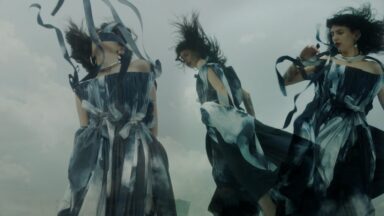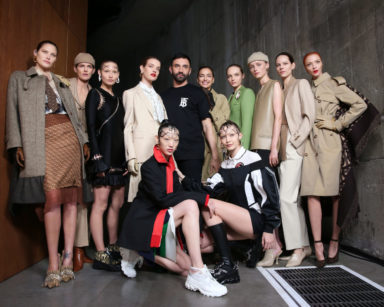In memory of the creative artist Judy Blame
Text by: Sandra Bardin
When mentioned to a common person, Chris Barnes’ name usually provokes nothing more than a puzzled look. However, you may be luckier if you try with a fashion expert, but call the man by his other, more famous name: Judy Blame, a nickname that sounds like an ironic declaration or even a mockery. On February 18th 2018 Chris Barnes passed away at the age of 58 in London, but we suspect that Judy, his ageless doppelgänger, is still here with us. Or at least his disruptive ideas certainly are: they contaminated everyone’s tastes and attitudes so much that within the last 40 years they undoubtedly managed to occupy a prominent position in western fashion. Besides, even the common people will understand who we are talking about if we specify that it is him we must credit for introducing studded jackets, hardware chokers, torn clothes, chains and other punk elements into streetwear and concert stages: a creative stylist, whose work went viral in the 1980’s by influencing more or less intensely the aesthetic imprinting of several generations, including millennials, regardless of their personal choices.
This nickname, touched by gender issues and filled with disapproval, belongs to the genius who turned Punk fashion into a worldwide phenomenon. The extent to which his merit was shared is up to the historians to determine. Chris grew up as a stylist with a group of photographers, musicians, artists, muses and other nocturnal creatures in search of ideas between West London and the hidden part of Soho. The best part of his work was made with the collective House of Beauty and Culture, a bizarre shop/laboratory located in East London, in the markets’ area: this creative workshop was a magnet for designers, fashion stylists, creative people and various artisans. Their sacred text was Wild Boys, a 1971 novel by William Burroughs about a dystopian society with self-destructive drives.
A note for non-professionals: regarded as a youth movement, Punk was born in the mid 70’s as an antithesis to the pacifist poetics of the hippie style and, subsequently, as a hedonistic protest against Thatcher’s rigour. Later, it would survive as a symbol of an eccentric lifestyle and stylistically provocative choices, meant to scandalise and contrast formal elegance, considered as massifying. Using actual waste as decorations or jewels, and turning trash into something desirable, Punk fashion started a revolution that went beyond the folklore of piercing or violent proto-goth makeup, thus participating in the “deconstructionist movement” which involved clothes, art, urban decorations and even language.
Judy Blame was a preacher of that philosophy, and that is why he is still adored by rock bands and pop stars all over the world. Such famous artists as Björk, Neneh Cherry, Boy George, Massive Attack owe him a lot. But he was also loved by important fashion designers in search of underground inspirations, including Martin Margiela and Rei Kawakubo from Comme les Garçons. Not to mention Versace: do you remember the evening dress worn by a semi-unknown Liz Hurley at the 1994 Oscar ceremony, a black fourreau, open on one side and held together by a row of safety pins? The tribute to Judy Blame was not officially acknowledged, but we are sure that the safety pin was his favourite fetish, virtually a logo.
Fortunately, the beautiful exhibition “Judy Blame – Never again” at the London Institute of Contemporary Art celebrated his talent in June 2016. Has there been a fashion walk of fame, Judy Blame would have certainly had his star in it.


